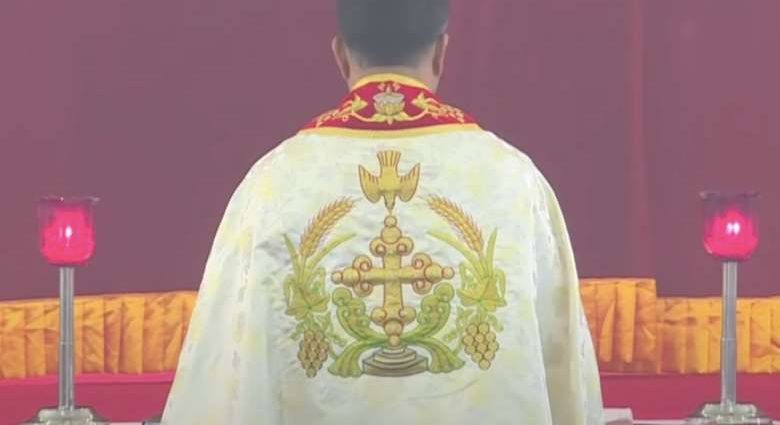By P. A. Chacko
Dumka, Aug 27, 2023: The ritual war fought on the Kerala terrain by the traditionalists and the progressives of the Syro-Malabar Church seems to be like the Kurukshetra war. Both sides are adamant. Each faction wants it to be a fight to the finish. The laity too is divided like the sheep between the contending shepherds.
Decidedly, the issue is not about the essence of the Eucharist instituted by Jesus Christ. Rather, I wonder if any seasoned theologian would authoritatively claim that Jesus Christ wanted the Eucharist to be institutionalized and mystified to the extent that the faithful followers of Christ, meaning Christian worshippers, should not participate in it in full view.
Let us look at it this way. There is the event, the Eucharistic Supper which Jesus shared with his disciples by breaking bread as a symbolism of ‘breaking’ his body on the Cross. Jesus thereafter told his disciples: ‘Do this in my memory.’
What preceded this sacred event was that the Master himself washing the feet of the disciples. Therefore, the context is humble service, instructing his disciples by example that any Eucharistic celebration has to have this aspect of service to the community.
That Eucharistic celebration takes its meaning and worth when it is extended in humble service. ‘I the Master have done it. You too ought to follow suit.’ The only ritual, if you can call it so, at the time of the Eucharistic supper was simple. All sat around. No one had a reserved seat, not even Peter who was going to be the first Pope.
Is it too simplistic to ask the dissenting group and the traditionalists to come to an understanding by looking at the whole issue from the laity’s side? I mean the believers who assemble in the Church. What is wrong if they view before their very eyes the whole event?
Did Jesus Christ instruct his disciples that the re-enactment of the Eucharist had to be done partly behind the curtain and partly in the view of the attending faithful? If the Syrian tradition took it upon itself to interpret the enactment as ‘a mystery not to be seen by the people’, it does not mean that in the post Vatican II era reforms cannot take place.
Vatican II was a historic event that let in fresh air into the Church by opening its doors and windows. It called for better laity participation. Liturgical languages like Latin or Syrian had to give way to local languages so that people could participate in Church functions meaningfully.
The norm of considering women as polluted and hence not deserving to enter the sanctuary or to read the epistle had to be dumped. Acolytes could be girls, epistle readers could be women. Even segregation of women into one part away from male vicinity got a sea change. The faithful could sit anywhere in the Church if they choose to do so.
Therefore, the issue is not whether the Mass should be said facing the people or back to the people. The issue should be looked at from the perspective of whether the believers can be accorded the privilege of participating in the Eucharistic celebration in full view.
East or west, this will be the most humanistic way of looking at the whole issue. Let mystifying and mysterious rituals give way to simple and human way of doing things so that the laity may not be cordoned off behind curtains or robes.
(Jesuit Father P A Chacko, a native of Kerala, has been a missionary among the Santal tribal people in the eastern Indian state of Jharkhand, for more than 50 years.)


What could be the real issue? It is not turning this or that side, not even Eucharist. It is the collective ego of Ernakulam over changanacherry group. Why not appoint a local as the Bishop instead of importing from outside. Allow some time to pass to settle the issue through dialogue with Vatican.